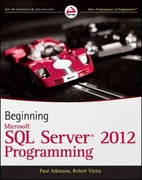Answered step by step
Verified Expert Solution
Question
1 Approved Answer
Question 2 ( a ) The IPv 4 datagram is shown in Figure 2 . 1 below. The bits allocated to each field are shown
Question
a The IPv datagram is shown in Figure below. The bits allocated to each field are
shown at the top of the frame.
Figure
i Calculate the size of the Payload in the transmitted packet, if the entry of the IHL
field in the header is and the Total length entry is
ii For the same packet as in part i find how many bytes were put into the Options
field.
iii Is it possible from the information provided in part i to define whether any padding
was used in the packet? If not, explain why. If yes, how big was the padding?
b The IPv addressing is based on a relatively small bit address space, which requires to
utilize various schemes for an efficient address allocation.
i The administrator of a campus LAN is assigned a single IP address of
Assuming that a LAN should comprise at least subnets and each subnet should
contain at most hosts, define a suitable subnet mask for the site. Find how many
subnets and how many hosts per subnet will be allowed.
ii The ISP Internet Service Provider has allocated the following block of IP addresses
to two networks which use CIDR Classless InterDomain Routing addressing:
Network : IP Base Address
Mask M
Network : IP Base Address
Mask M
If a packet with the IP destination address IP arrives at the router
to which the Networks and are attached, carry out a Boolean logical AND
operation on IP and each of the address masks M and M and compare the
obtained result with the given base addresses IP and IP To which network the
packet will be routed? Explain why.
c An IPv link shown in Figure consists of two hosts H and H and a router R The
router R defines the links maximum transmission unit MTU MTU bytes. The
application layer of the host H generates a byte file which is given to the transport
layer for a reliable transmission to the host H The network uses a nontransparent
fragmentation.
Figure
i Is fragmentation of the packet required in this case? Explain your answer.
ii In case the packet is fragmented, calculate the payload of each fragment.
iii Show the Total Length, DF MF and Fragment Offset fields of the IP header in each
packet transmitted over this link. Explain why these fields are needed in the packet
fragmentation.
d Compare the OSI and the TCPIP reference models, sketch their layer structure, and
explain their similarities and differences. Note that you are not required to explain the
functionality of each layer in the models

Step by Step Solution
There are 3 Steps involved in it
Step: 1

Get Instant Access to Expert-Tailored Solutions
See step-by-step solutions with expert insights and AI powered tools for academic success
Step: 2

Step: 3

Ace Your Homework with AI
Get the answers you need in no time with our AI-driven, step-by-step assistance
Get Started


